
Sears Hercules work shirts in the 1930s, which I’ve reproduced as the Heracles work shirt.
We’re back! (Missed Part 1? Read it here.) You might be wondering, “Just one decade this time?” Yes, and for good reason. The 1930s were an eventful era, marked by the Great Depression, the Dust Bowl, and the early war years, all captured in countless photographs of everyday life. My deep dive into workwear, especially work shirts, naturally focuses on 1900 to 1939. While the 1940s and 1950s produced some stellar workwear, The Rite Stuff’s heart remains firmly rooted in the pre-1940s era.
The 1930s
What can I say about the 1930s that hasn't been said umpteen times elsewhere? For a lot of people, it was tough times starting with the Stock Market Crash of 1929. What's less known is that the American farmer's Great Depression began back in the 1920s and the 1930s was a continuation of that, with the Great Depression, and even the Dust Bowl, heaped on top.

Men in the 1930s wearing workwear. Note the ‘chinstrap’ work shirt, flap pocket denim work pants, wool coats, boots and flat/newsboy caps. Image courtesy of the Library of Congress.
The Great Depression and the Dust Bowl reshaped America in countless ways. Thousands of families from the affected regions fled to California in search of a better life, often facing hostility upon arrival. The American farmer, more than anyone, became the reluctant protagonist of the decade. As conditions worsened after the 1929 stock market crash, farmers sought government support, but President Herbert Hoover was slow to respond. The 1932 election of Franklin D. Roosevelt changed everything, ushering in the New Deal and new agricultural programs, including the 1937 creation of the Farm Security Administration.
The FSA’s efforts produced an extraordinary collection of photographs capturing American workers, farmers, and ranchers, giving us some of the best visual records of workwear from that era.
In terms of work shirts, the 1930s saw both innovation and tradition. While many manufacturers stuck to tried-and-true coat-style shirts, often made of chambray and triple-stitched for durability, Reliance Mfg. Co. of Chicago pushed design boundaries. In 1930, they introduced the now-iconic cigarette pocket work shirt, as shown in this newspaper ad, one of which hangs framed on my office wall:
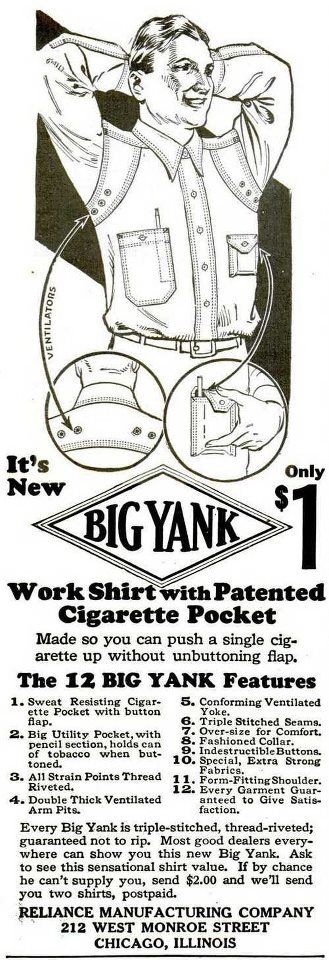



I have occasionally seen some confusion about this type of shirt, and even uncertainty about what to call it ("asymmetrical pocket shirt?") but this ad should clear up any doubt. The smaller pocket holds cigarettes and allows for some access to them without the need to unbutton the pocket. What's more, the pocket is sewn to have an emoth space between it and the chest to help prevent sweat from getting smokes wet. The larger pocket was made extra large to compensate for the smaller right pocket, aand also to fit a tin or bag with loose-leaf tobacco and rolling papers, as well as allowing for a pencil/pen slot.
Here's a patent from one J.W. Champion to better illustrate this in detail:

That same year, this shirt would get an official name: the Flyer:
Here's slightly simplified version from 1931 that's more affordable thanks to the lack of ventilation holes and front shoulder yokes, which add to the cost of making per shirt:
And five years later, in 1937, a comic book style ad for this shirt:
Here’s an example of this shirt in the wild from the 1930s:


And another:

Also at the beginning of the decade, Reliance introduced the Zipper Ace shirt with a similar pocket setup but as a pullover with a zipper front:

Here’s a real-life Zipper Ace:

And another:

Here's a Sears take on the zipper-front pullover from 1937:

An eagle-eyed reader noticed that that there’s even a zipper-front pullover plaid work shirt being worn by the main subject in Norman Rockwell’s painting “Freedom of Speech”:

Below is a zipper pullover in salt and pepper, or covert, from another brand tagged as "Jumboshirt" that sold over at Cocky Crew Store; note the thin, long ‘chinstrap’ that is actually more reminiscent of one on a 1910s shirt:

It looks similar to the zipper-front Sturdy Oak below:

Black salt and pepper cloth was very popular in the 1930s and beyond. We reproduced it in this version of the Atlas shirt:

As well as in light grey:


And while Big Yank offerings were usually more hit than miss, here's one curiosity that didn't catch on; the figure-four vent hole back:

Another unusual back yoke vent configuration, from 1934:

Speaking of Atlas shirts and Big Yank, they share something else in common: their one-piece, fold-over cuff design:

These fold-over cuffs were patented by Reliance Mfg. Co. for its Big Yank shirts in 1937 and are a one-piece cuff marketed as “elbow action” sleeves and cuffs. The idea was to provide more room at the elbow for greater ease of movement and to eliminate the cuff placket to help prevent the sleeve from being caught or torn.
This deadstock 1930s Big Yank posted by Foremost Vintage shows the sticker used to market it:


Every shirt we’ve seen so far has been a long sleeve, but what about in summer? Men would usually literally roll their sleeves up, but they would sometimes also crop the sleeves down to short sleeves:



I recreated that with the short-sleeve Bantam work shirt:

As worn by yours truly:

Here's an interesting piece from Montgomery Ward in the 1934-35 Montgomery Ward Fall/Winter catalog, courtesy of eBay:

Notice that the top half of the shirt is double layered; check the horizontal stitching between the chest pockets and placket.
The above shirt was marketed as the Pioneer by Wards, and the Cast Iron shirt by Sears. Both would occasionally feature double shoulder patches as well:


And here’s a real-life example from an FSA photo taken in Texas in the 1930s:

And a vintage Wards Pioneer version sold by As Is Vintage:




Speaking of unique designs, below is a patent from 1936 for a double pocket, one smaller one ostensibly for cigarettes on top of a larger open top pocket, that would eventually find it’s way into Uncle Sam shirts:

Here’s a vintage 1940s Uncle Sam shirt from my personal collection:

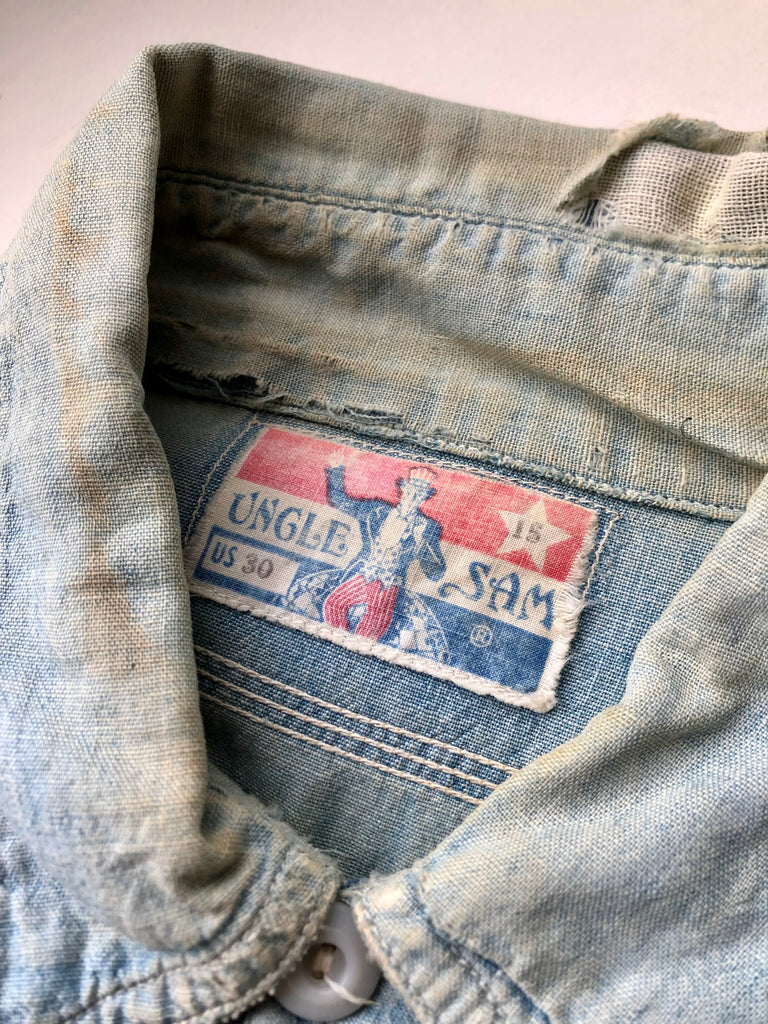

As worn by me:

And here’s a box for a half-dozen Uncle Sam shirts from my personal collection:



And an Uncle Sam in a catalog that predated the 1936-37 patented cigarette pocket:

Here’s something you don’t see much of anymore; ‘Fancy Tupelo’ chambray shirting fabric:

Here’s one in a Montgomery Ward 1930-31 catalog:

Here’s a different version from M.W. Savage in 1934:

And here are some of the very few photos I’ve ever seen of someone wearing a Tupelo chambray shirt, on the right:

And another clearer shot:

And one more, courtesy of the Lora Webb Nichols Photography Archive:

You can read more about Tupelo madras work shirts in a separate blog post I made dedicated solely to their origin and history.
The Sears Hercules and other work shirts had some nice catalog illustrations in the ‘30s too:
ou


The above is the direct inspiration for the Atlas shirt, along with the Big Yank 1920s standard chambray shirt.
I reproduced the former as the Heracles shirt:

And the latter as the Atlas shirt:

How about epaulets to keep your suspenders in place?

A good concept but it didn’t catch on for obvious reasons.
Regular, tall, and stout sizes were occasionally offered for standard shirts in both the ‘20s and ‘30s, like so:

One-wash/pre-shrunk is definitely the way to go with work shirts:

A two-page selection from the Montgomery Ward fall/winter 1930-31 catalog:
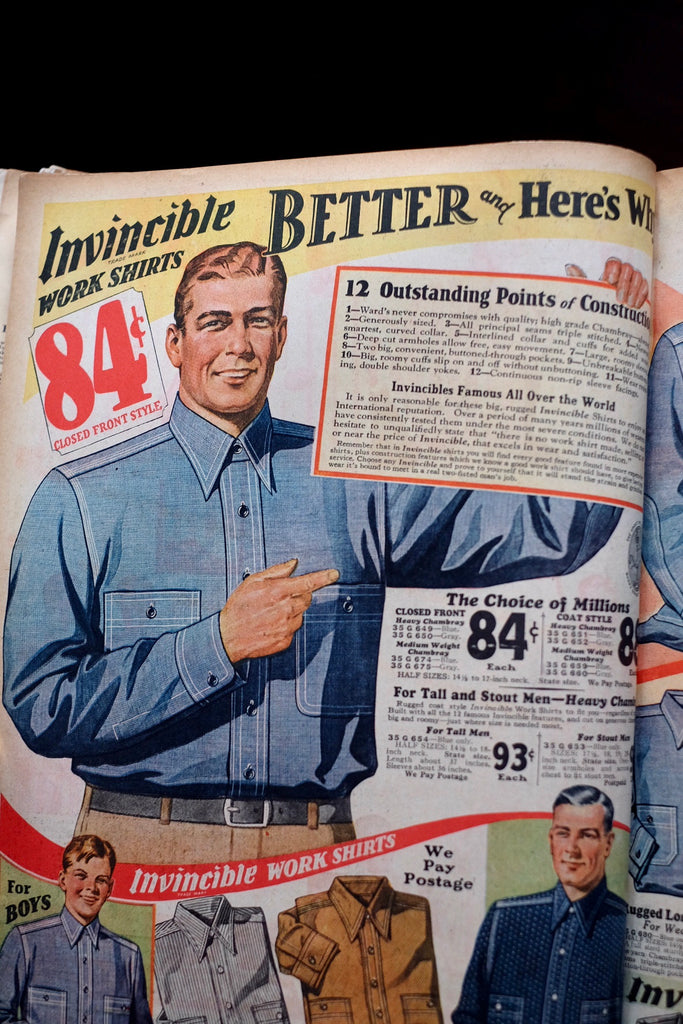


Some Hercules variations:


Overall, the 1930s saw a sort of stabilization of designs that rendered most shirts quite similar to each other, regardless of brand or store. Makers had mostly hit on what they liked and kept things to a standard, rather than trying to reinvent the wheel. However, towards the end of the decade, chinstraps began to disappear. High, thin back yokes mostly gave way to the back yoke dimensions we're familiar with today, the big exception being USN chambray shirts worn into the '40s. As the decades went on, other details would change or be left out; for example, chest pockets would get higher and higher. Up until this point chest pockets either lined up with the third button if the chest placket or fell below it; in some cases halfway down between the third and fourth buttons. Evebtually these pockets would go higher and higher. Most modern work shirts have them nearly at the front placket’s second button!
The following is a selection of some more photographic examples of '30s work shirts.
Here's a personal favorite, with a man wearing a flat cap, a chambray shirt with a high, thin back yoke, and trousers with button-down front pocket flaps:

A nice blue chambray and denim work pants, colorized:

Chin strap and pencil pocket chambray (right); black, likely wool, flannel, or moleskin, and large, possibly Mother of Pearl buttons (left):

This appears to be one of Big Yank's standard shirts; it also happens to be a big inspiration for the Atlas shirt:

A nice chambray from 1938, courtesy of Buler on Denimbro, at the Fort Worth Exposition:
Black salt & pepper (colorized):


Chinstrap, high back yoke shirt, and a wealth of other workwear pieces here:
Black salt & pepper shirt, and either matching or denim trousers:

Triple-stitched chinstrap chambray; photo appears to be reversed:

Nice smooth chambray with big buttons:
Two miners at the same camp wearing chinstrap triple-stitch chambrays:
Similar shirt:
Black salt and pepper; note the lack of a chinstrap:
Chinstrap chambray with bellows expandable front pockets:
It's similar to this Head Light shirt like this one that Rivet Head (aka Matthew Strickland) found for sale on eBay (sans flaps):

Perhaps it was a 5 Brothers shirt, like this one that sold over at Cocky Crew Store:

Missing top button held together with a safety pin on this triple-stitch chinstrap chambray:
Chambray for both husband and wife; it appears she's possibly wearing one of his old shirts:
Hard to tell if this is a salt and pepper or regular chambray:
This is definitely black salt and pepper:
Finally, the 1930s ended as World War II began, and soon the US would be involved in the war. Workwear would evolve some in the 1940s, but not as dramatically as before. Perhaps the most interesting developments were in militaria, from officer chinos to N-1 deck jackets, M-43 roughout boots to frogskin camo and OD herringbone twill utility pants. But who knows, I like a good pair of 1940s engineer boots and chinos as much as the next guy, so let's see what happens.
Until then, here's some examples of early and mid-1940s styling:

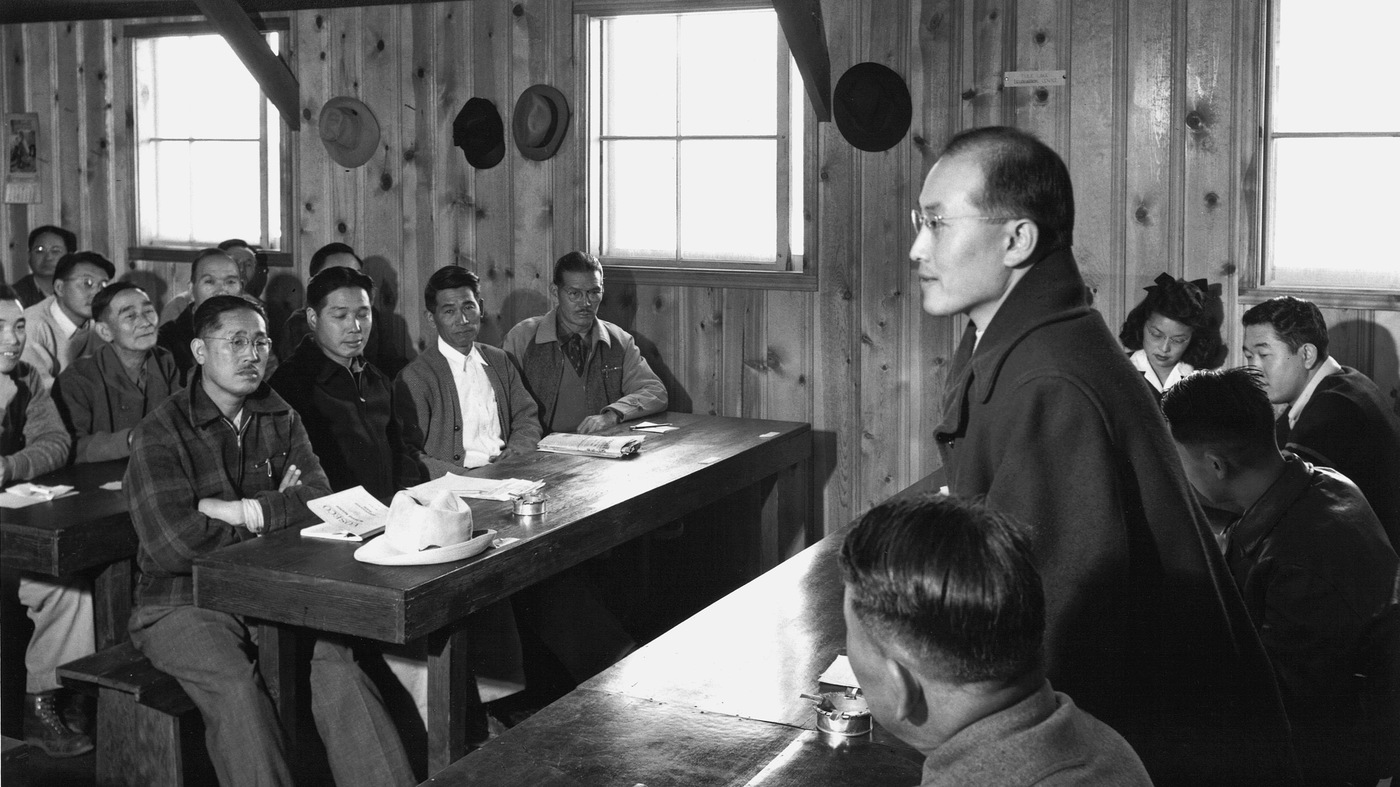
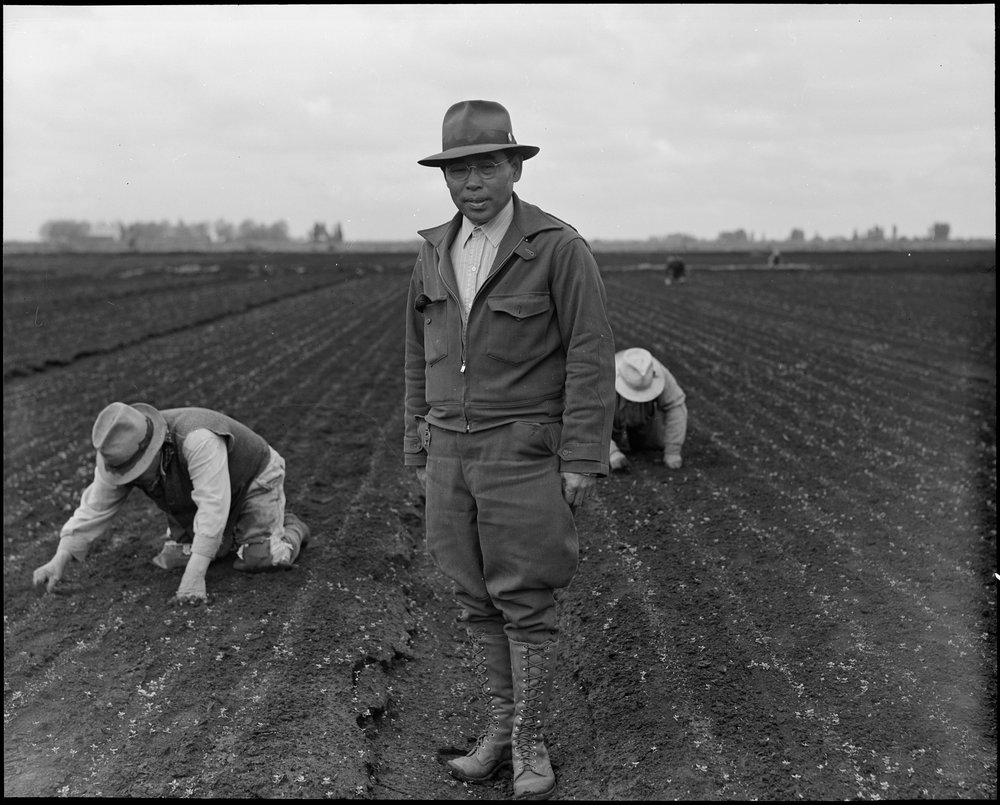
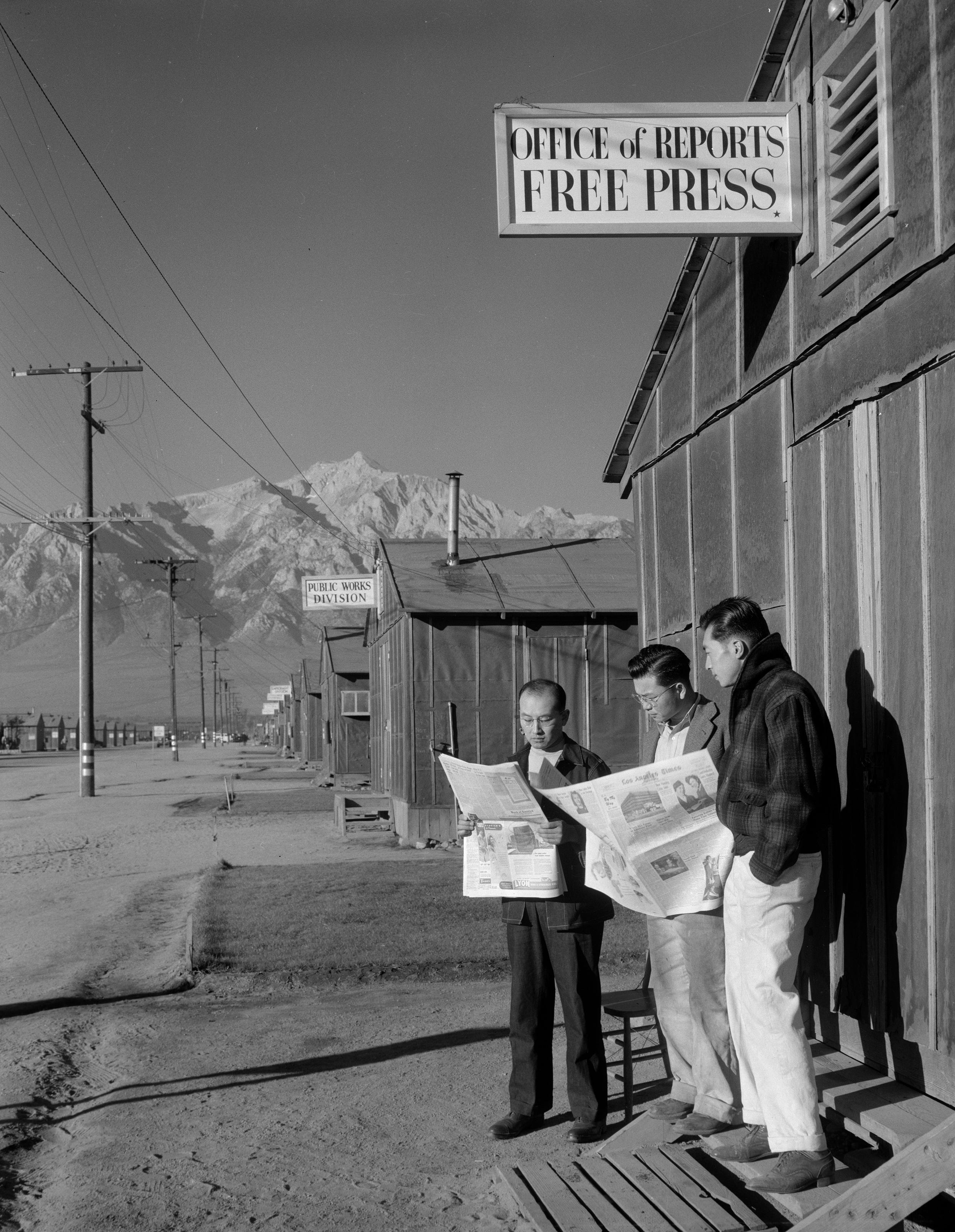










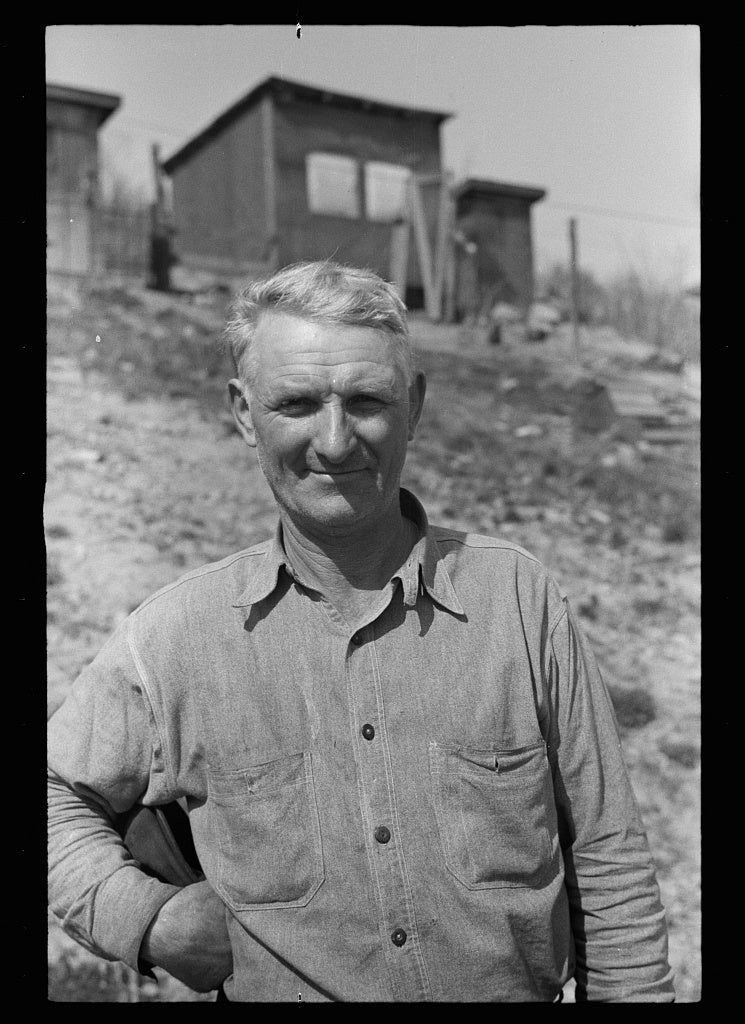








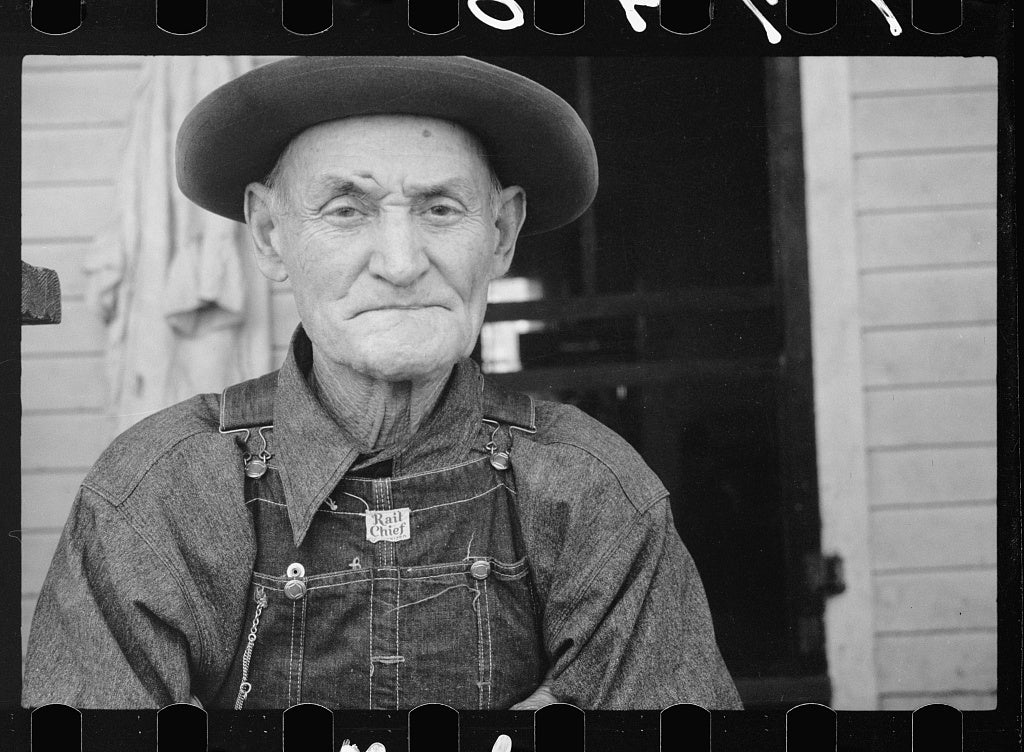
Amazing article. I ran across a mention of “Big Yank” shirts in Wallace Stegner’s book Beyond the Hundredth Meridian. A quick shirt brought me this perfect summary and now I’m heading the early 1900s article. Thanks!
I liked your info. I have several salt and pepper chambray shirts, with tags. also jeans work coat, also unworn with tags. Do you purchase?